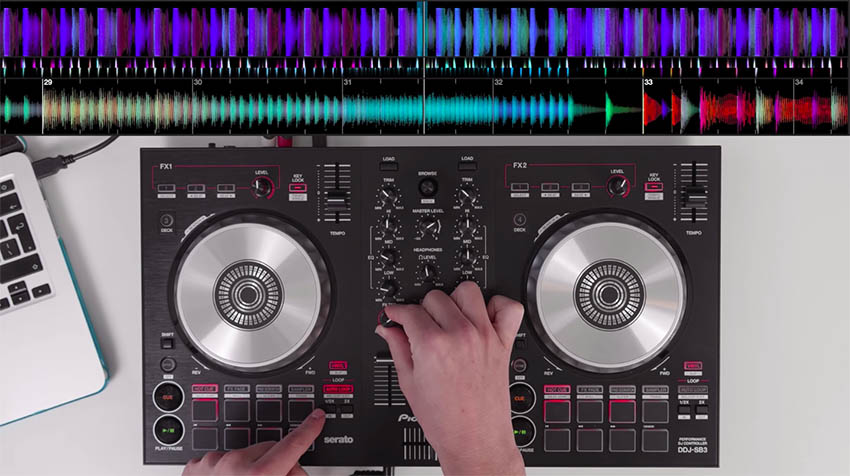

A computer program that automates the DJing task would thus democratize access to high-quality continuous music mixes outside the dance club setting.

Unfortunately, DJing requires considerable expertise, specialized equipment, and time-unavailable to most music consumers.

Thus, especially for electronic dance music (EDM) in dance clubs, it is common practice for so-called disk jockeys (DJs) to blend songs together into a continuous seamless mix. Indeed, popular music tracks commonly have a long intro and outro, such that the excitement of listening might fade if songs are played in full. When music tracks are played back to back, i.e., starting one song after the other is finished, the listening experience is interrupted between the end of a song and the beginning of the next. On these songs, the proposed song selection process and the implemented DJing techniques enable the system to generate mixes of high quality, as confirmed by a subjective user test in which 18 Drum and Bass fans participated. This allowed us to exploit genre-specific properties, resulting in a more robust performance and tailored mixing behavior.Įvaluation on a corpus of 160 Drum and Bass songs and an additional hold-out set of 220 songs shows that the used MIR algorithms can annotate 91% of the songs with fully correct annotations (tempo, beats, downbeats, and structure for cue points). To make this possible, we focused on one specific sub-genre of electronic dance music, namely Drum and Bass. To the best of our knowledge, it is the first fully integrated solution that takes all basic DJing best practices into account, from beat and downbeat matching to identification of suitable cue points, determining a suitable cross-fade profile and compiling an interesting playlist that trades off innovation with continuity. Leveraging the understanding of the music tracks offered by these state-of-the-art MIR techniques, the proposed system surpasses existing automatic DJ systems both in accuracy and completeness. The proposed system is built on top of several enhanced music information retrieval (MIR) techniques, such as for beat tracking, downbeat tracking, and structural segmentation, to obtain an understanding of the musical structure. We present the open-source implementation of the first fully automatic and comprehensive DJ system, able to generate seamless music mixes using songs from a given library much like a human DJ does.


 0 kommentar(er)
0 kommentar(er)
